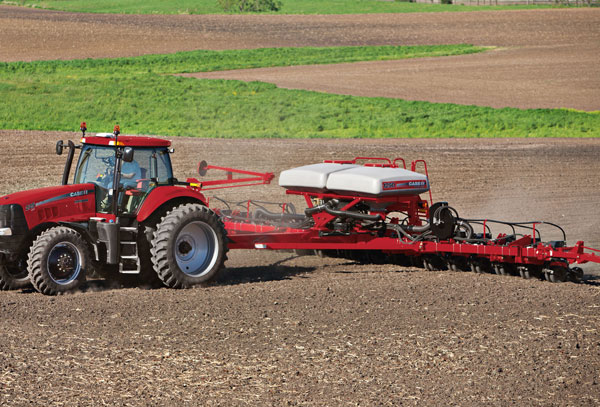September 24, 2013

Agricultural economists are urging growers to calculate estimated budgets for the 2014 cropping year and again are offering a free guide to help with the process.
The 2014 Purdue University Crop Cost and Return Guide, which is available for free download from the Center for Commercial Agriculture website at https://www.agecon.purdue.edu/commercialag/resources/index.html, offers estimated costs for planting, growing and harvesting a variety of crops, as well as estimated contribution margins and earnings.
The guide is frequently updated as grain futures prices change and the costs of inputs, such as seed, fertilizer, chemicals and fuel, fluctuate.
According to Michael Langemeier, Purdue Extension agricultural economist, there are two main drivers in the 2014 guide compared with the 2013 edition — falling grain prices and fertilizer costs.
"The expected drop in corn, soybean and wheat prices is having a large negative impact on market revenue and contribution margins," he said. "More positive is the expected continued decline in fertilizer costs. Fertilizer prices are quite a bit lower right now compared to what they were last fall when we were working on the 2013 guide."
You can check current crop commodity prices now.
According to guide estimates, revenues for rotation corn on average-productivity land could fall by $140 per acre compared with 2013. Rotation soybean revenues on average-productivity land could fall by $35 per acre.
Those changes in grain prices and input costs mean it's even more important for growers to estimate their budgets for the next year, Langemeier said. As it looks now, rotation soybeans could be more profitable than continuous corn for some farmers in the coming year.
Rotation soybeans very attractive
"Rotation soybeans are looking very attractive for 2014, so we could see more rotation soybeans than continuous corn," he said.
Right now, the per-acre contribution margin (revenue minus variable costs) for rotation soybeans on average land is an estimated $395, while continuous corn is $277. Those numbers could change, however, as the 2013 cropping season wraps up.
Want the latest in ag news delivered daily to your inbox? Subscribe to Southeast Farm Press Daily. It’s free!
Langemeier also pointed out the estimates in the guide won't directly apply to individual farms.
"This guide is not going to be directly applicable to any farm," he said. "This guide is specifically that — a guide. It gives a person an idea of how market revenue should be computed, and it gives an idea of how we did it, using current futures prices and trend yields.
"More importantly, it gives someone an idea of the important costs that need to be included and how you would calculate those costs for a specific farm, for a specific field and for a specific enterprise, such as rotation corn."
Included in the guide are illustrations of how to calculate variable costs — fertilizer, seed, fuel and chemicals — and overhead costs, such as machinery, operator labor and land rent.
The guide focuses very heavily on figuring out a farm's opportunity costs when calculating overhead. Opportunity costs include the loss of money from alternatives that aren't chosen. For example, if farmers own land and choose to farm it themselves, they give up potential rental income.
"We basically have two bottom lines in this guide," Langemeier said.
"The first one is called a contribution margin — that's market revenue minus variable costs. The second is earnings — the contribution margin minus overhead costs. The contribution margin should be positive because you have overhead costs you need to be able to cover.
“The earnings, we would expect over a long period of time, to be close to zero. Farmers need to include opportunity costs in a budget, such as the cost to own machinery, land rent and the fact that their labor is worth something."
More from Southeast Farm Press
Wet weather throws tough calls at 2013 Georgia cotton farmers
Research farm sets Sunbelt Expo apart from other shows
Detailed monitoring of farm energy costs can improve bottom line
You May Also Like




